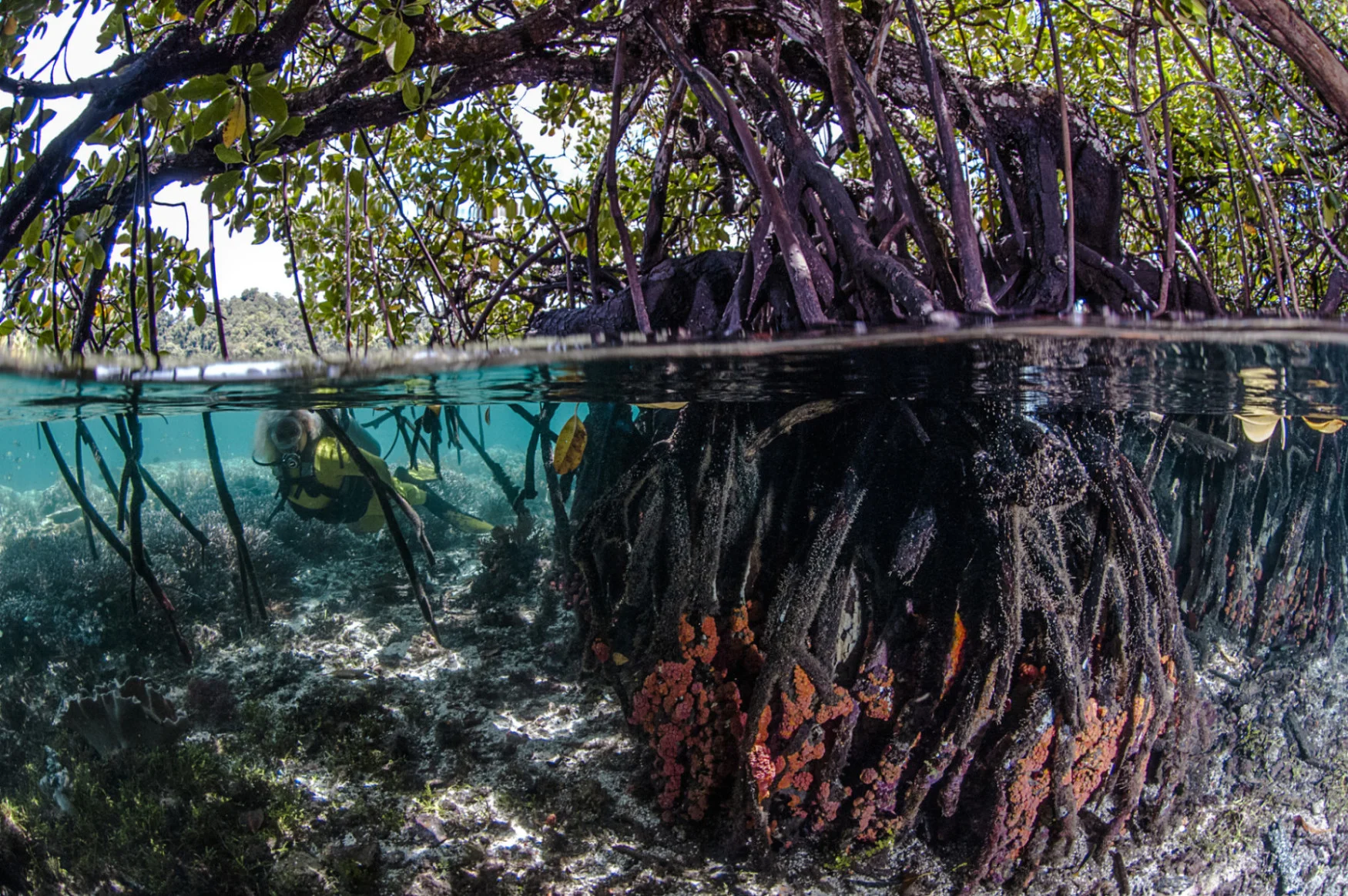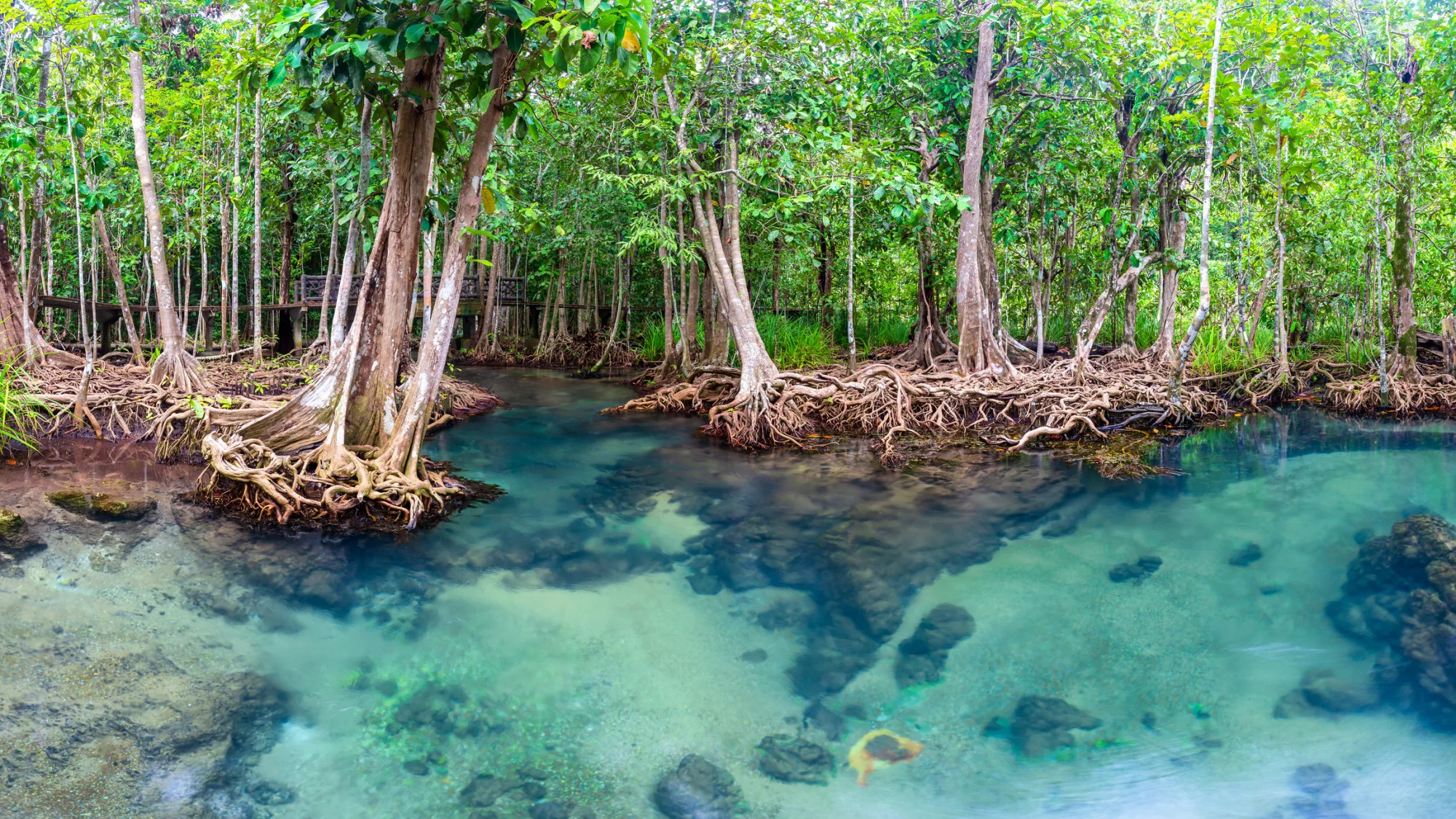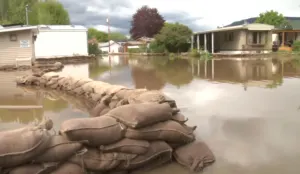
What are nature-based solutions for climate change, and why do they matter?
Very little private investment is currently going into nature-based solutions, and experts say that this funding must increase substantially.
The world is falling short of “building back better” with only 18 per cent of economic recovery spending on green initiatives. And, just 2.5 per cent was invested in protecting or enhancing nature.
Meanwhile, some 17 per cent of recovery funds went into activities like road building that have a negative impact on nature.
This is a major problem because to successfully tackle the interlinked climate, biodiversity, and land degradation crises, annual investments in nature-based solutions will have to triple by 2030 according to a recent report from the State of Finance for Nature.

Jungle river in Thapom mangrove forest, Krabi, Thailand. (Pakin Songmor. Moment. Getty Images)
Both public and private investments are urgently needed for nature protection to permit the restoration of some two billion hectares of degraded lands and to enhance nature in urban areas, the report from the United Nations Environment Programme (UNEP) and World Economic Forum says.
“The report is a wake-up call for governments, financial institutions, and businesses to invest in nature,'' said UNEP Executive Director, Inger Andersen.
“If we do not save nature now, we will not be able to achieve sustainable development,” Andersen continued.
Report co-author Danille Carreira of the World Economic Forum told The Weather Network “nature underpins our economies” and “business as usual activities are destroying nature.”
“We must change our economic system,” Carreira noted. “Protecting and restoring nature isn’t a nice to do, this is a must do.”

Clear cut logging on Vancouver Island, British Columbia. (Alex Ratson. Moment. Getty Images)
Some regions are close to a tipping point where nature will no longer be able to support the people living there, Carreira said.
The overall amount of investment needed is much less than one per cent of the global GDP. A small price to pay to ensure nature can provide the services we are dependent on, she said. Failing to make this investment is like knowing the water pipes in your home are leaking but not spending the money to fix them.
Carreira says the failure to actually green the economic recovery is due to a widespread lack of understanding of how vitally important nature is to our survival. However, there is growing awareness of this existential threat amongst some political and corporate leaders but they don't know how to make investments in nature-based solutions, she said.
WHAT ARE NATURE-BASED SOLUTIONS?
Nature provides humanity with a wide range of services including clean water, oxygen, food, building materials, energy, and soaks up about half of all human-generated CO2 emissions.

Sustainable building with a green vertical garden façade. (Artur Debat. Moment. Getty Images)
Protecting, restoring, or managing natural and semi-natural ecosystems are one type of nature-based solution. Others include the sustainable management of croplands or timberlands; or establishing new ecosystems in urban areas. These solutions can improve biodiversity, reduce pollution, increase food production, and absorb carbon among other benefits.
A new study estimates nature-based actions in Canada could absorb or sequester up 78 million tons of CO2 a year — equivalent to the CO2 emissions from heavy industry in Canada. Avoiding grassland conversion is the biggest carbon absorbing opportunity the researchers found. The next largest was preventing peatland disturbance from extraction, mine development, or road and seismic line construction, followed by expanding the use of cover crops in agriculture.
Unlike proposed carbon capture and storage technology, these nature-based solutions to mitigate carbon emissions can be deployed right away, are relatively low cost, and provide a range of co-benefits, the study concludes.

A farmer in an alfalfa field at harvest checking the crop. Alfalfa is a common cover crop. (Fertnig. E+. Getty Images)
Examples of nature-based solutions already in place in different parts of the world include:
Instead of investing billions of dollars in water treatment plants, New York City brings its high-quality drinking water through aqueducts connected to protected areas in the nearby Catskill/Delaware forests and wetlands.
A Swedish local water authority found it cheaper to pay for a program to establish blue mussel beds in Gullmar Fjord to filter nitrate pollution than to build a new treatment facility on shore.
In Uganda, a beer brewer is paying for the protection of wetlands to retain their valuable capacity to maintain a steady and abundant supply of clean water.
More than one million hectares in eight African countries are being restored by incorporating trees on degraded grazing lands; local communities receive support to do the tree planting and maintenance that will sequester carbon, improve biodiversity, and increase food availability.
Local communities in Costa Rica are receiving funding to restore coastal mangroves to improve habitat for fish and shellfish while increasing shoreline protection.
Restoring some of the more than two billion hectares of degraded lands in the world would go a long way to reducing the development pressures on virgin lands and intact forests, says report co-author Ivo Mulder, Head of Climate Finance Unit at UNEP.

Herd of elephants in Kenya. (Pierre-Yves Babelon. Moment. Getty Images)
Currently, very little private investment is going into nature-based solutions and that must increase substantially. Investing in these kinds of solutions can help companies reach their net zero carbon targets and make their supply chains sustainable, Mulder said in an interview.
Nature-positive solutions are a $10.1 trillion business opportunity and could create nearly 400 million new jobs by 2030 according to a report published in July 2020 by the World Economic Forum.
Investing in nature-based solutions is a new idea for the private sector but they are interested, Mulder continued. The big question is how to do it so it is effective for the long term, protects the rights of Indigenous and local peoples, and is relatively low risk.
Governments will need to develop standards, regulations, and provide some financial backing in partnership with the private sector.
“We need to create an asset class around nature-based solutions that is attractive and commercially viable.”
Nature protection, restoration, and enhancement should be embedded in everything we do.
Ultimately every sector, and everyone, has to be involved in reversing the decline of biodiversity and protecting our climate, said Mulder.
Thumbnail credit: Giordano Cipriani. The Image Bank. Getty Images










